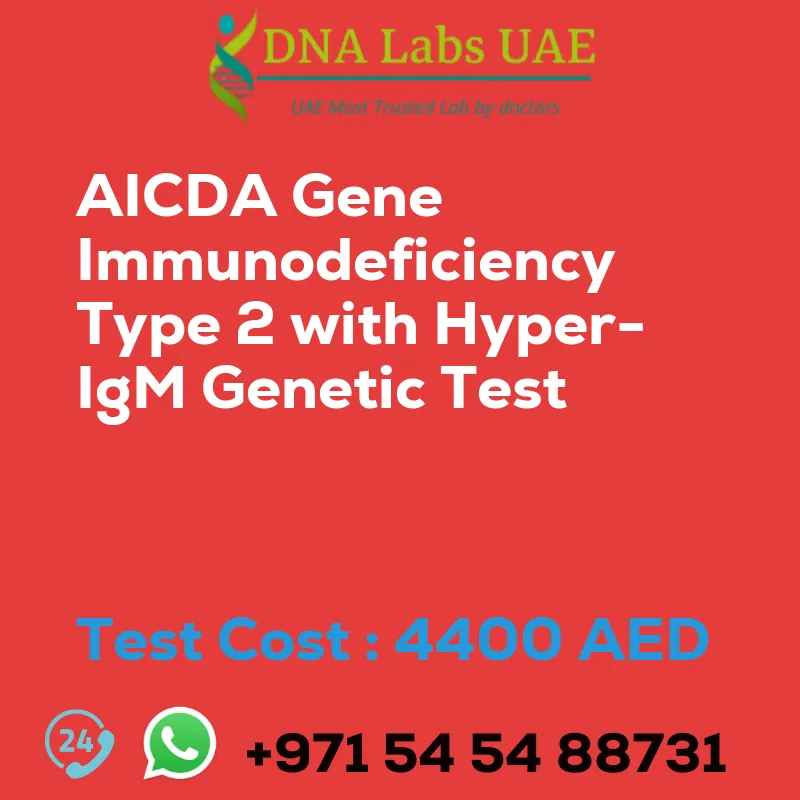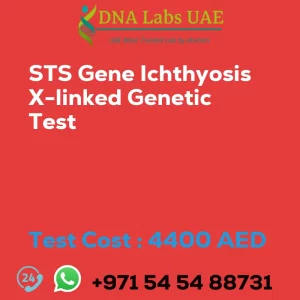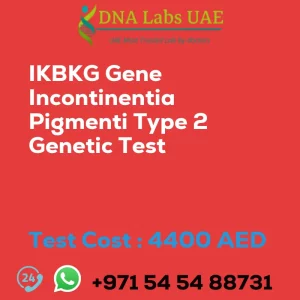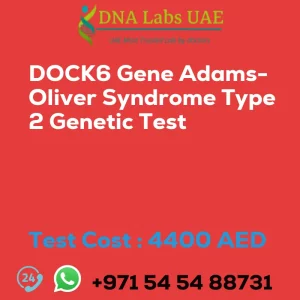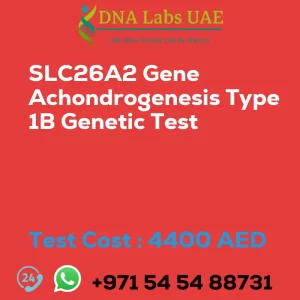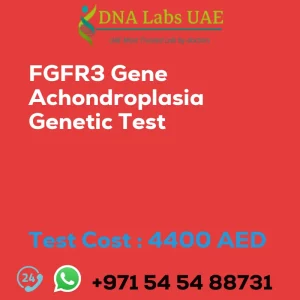AICDA Gene Immunodeficiency Type 2 with hyper-IgM Genetic Test
At DNA Labs UAE, we offer the AICDA Gene Immunodeficiency Type 2 with hyper-IgM Genetic Test at a cost of AED 4400.0. This test is used to diagnose immunodeficiency type 2 with hyper-IgM and provides valuable information for patient management and genetic counseling.
Test Details
The AICDA gene is responsible for encoding the activation-induced cytidine deaminase enzyme, which is involved in the process of somatic hypermutation and class-switch recombination of immunoglobulin genes. Mutations in the AICDA gene can lead to a condition known as immunodeficiency type 2 with hyper-IgM.
NGS (Next-Generation Sequencing) genetic testing is a high-throughput method used to analyze multiple genes simultaneously. In the context of AICDA gene testing, NGS can be used to identify mutations or variants in the AICDA gene that may be associated with immunodeficiency type 2 with hyper-IgM.
NGS genetic testing involves extracting DNA from a patient’s blood or other tissue samples. The DNA is then sequenced using advanced sequencing technologies, which generate large amounts of data. Bioinformatic analysis is performed to identify any variations or mutations in the AICDA gene.
By identifying specific mutations or variants in the AICDA gene, NGS genetic testing can help diagnose immunodeficiency type 2 with hyper-IgM and provide valuable information for patient management and genetic counseling. It can also aid in understanding the underlying genetic mechanisms of the condition and potentially guide the development of targeted therapies.
Test Components
- Price: AED 4400.0
- Sample Condition: Blood
- Report Delivery: 3 to 4 Weeks
- Method: NGS Technology
- Test Type: Osteology Dermatology Immunology Disorders
Doctor and Test Department
This test is performed by a Dermatologist and is conducted in our Genetics department.
Pre Test Information
Before undergoing the AICDA Gene Immunodeficiency Type 2 with hyper-IgM Genetic Test, it is important to provide the clinical history of the patient. Additionally, a Genetic Counselling session may be conducted to draw a pedigree chart of family members affected with AICDA Gene Immunodeficiency Type 2 with hyper-IgM NGS Genetic DNA Test gene AICDA.
| Test Name | AICDA Gene Immunodeficiency type 2 with hyper-IgM Genetic Test |
|---|---|
| Components | |
| Price | 4400.0 AED |
| Sample Condition | Blood |
| Report Delivery | 3 to 4 Weeks |
| Method | NGS Technology |
| Test type | Osteology Dermatology Immunology Disorders |
| Doctor | Dermatologist |
| Test Department: | Genetics |
| Pre Test Information | Clinical History of Patient who is going for AICDA Gene Immunodeficiency type 2, with hyper-IgM NGS Genetic DNA Test. A Genetic Counselling session to draw a pedigree chart of family members affected with AICDA Gene Immunodeficiency type 2, with hyper-IgM NGS Genetic DNA Test gene AICDA |
| Test Details |
The AICDA gene is responsible for encoding the activation-induced cytidine deaminase enzyme, which is involved in the process of somatic hypermutation and class-switch recombination of immunoglobulin genes. Mutations in the AICDA gene can lead to a condition known as immunodeficiency type 2 with hyper-IgM. NGS (Next-Generation Sequencing) genetic testing is a high-throughput method used to analyze multiple genes simultaneously. In the context of AICDA gene testing, NGS can be used to identify mutations or variants in the AICDA gene that may be associated with immunodeficiency type 2 with hyper-IgM. NGS genetic testing involves extracting DNA from a patient’s blood or other tissue samples. The DNA is then sequenced using advanced sequencing technologies, which generate large amounts of data. Bioinformatic analysis is performed to identify any variations or mutations in the AICDA gene. By identifying specific mutations or variants in the AICDA gene, NGS genetic testing can help diagnose immunodeficiency type 2 with hyper-IgM and provide valuable information for patient management and genetic counseling. It can also aid in understanding the underlying genetic mechanisms of the condition and potentially guide the development of targeted therapies. |

